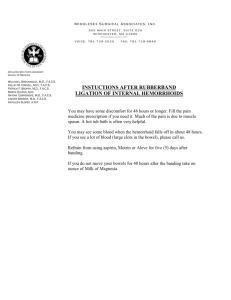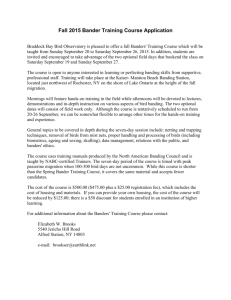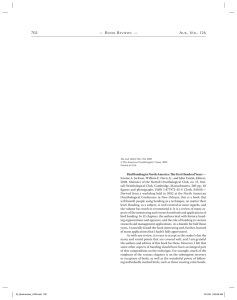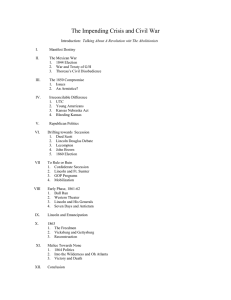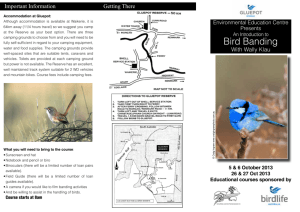Frederick C. Lincoln and the Formation of the John Tautin ________________________________________
advertisement
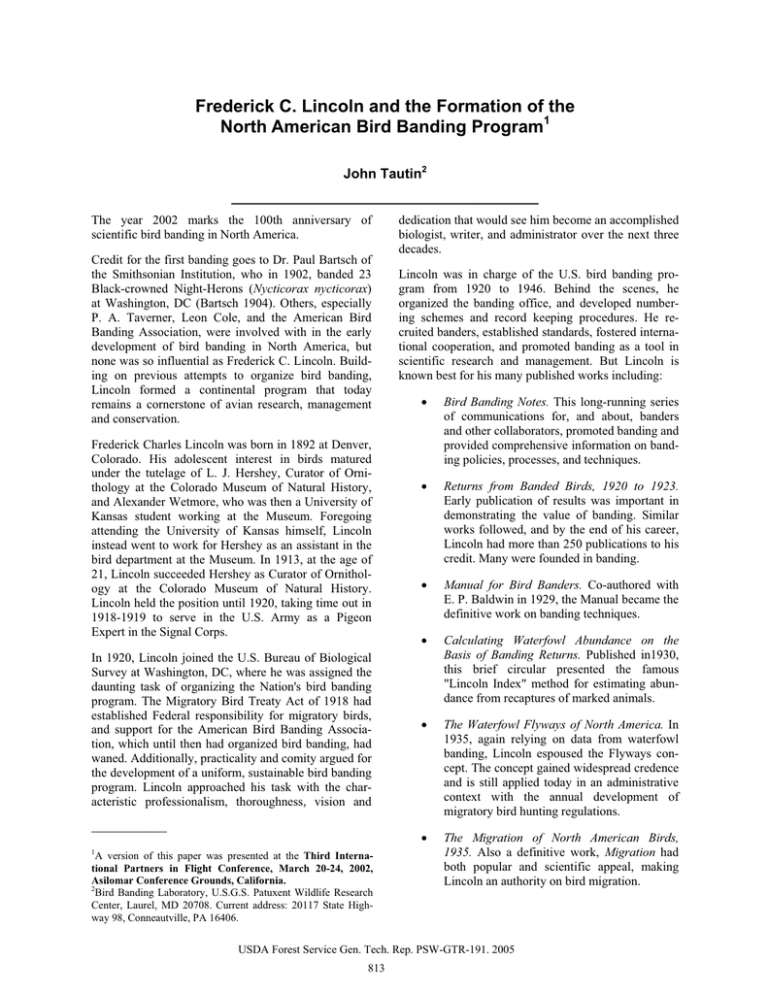
Frederick C. Lincoln and the Formation of the North American Bird Banding Program1 John Tautin2 ________________________________________ The year 2002 marks the 100th anniversary of scientific bird banding in North America. Credit for the first banding goes to Dr. Paul Bartsch of the Smithsonian Institution, who in 1902, banded 23 Black-crowned Night-Herons (Nycticorax nycticorax) at Washington, DC (Bartsch 1904). Others, especially P. A. Taverner, Leon Cole, and the American Bird Banding Association, were involved with in the early development of bird banding in North America, but none was so influential as Frederick C. Lincoln. Building on previous attempts to organize bird banding, Lincoln formed a continental program that today remains a cornerstone of avian research, management and conservation. Frederick Charles Lincoln was born in 1892 at Denver, Colorado. His adolescent interest in birds matured under the tutelage of L. J. Hershey, Curator of Ornithology at the Colorado Museum of Natural History, and Alexander Wetmore, who was then a University of Kansas student working at the Museum. Foregoing attending the University of Kansas himself, Lincoln instead went to work for Hershey as an assistant in the bird department at the Museum. In 1913, at the age of 21, Lincoln succeeded Hershey as Curator of Ornithology at the Colorado Museum of Natural History. Lincoln held the position until 1920, taking time out in 1918-1919 to serve in the U.S. Army as a Pigeon Expert in the Signal Corps. In 1920, Lincoln joined the U.S. Bureau of Biological Survey at Washington, DC, where he was assigned the daunting task of organizing the Nation's bird banding program. The Migratory Bird Treaty Act of 1918 had established Federal responsibility for migratory birds, and support for the American Bird Banding Association, which until then had organized bird banding, had waned. Additionally, practicality and comity argued for the development of a uniform, sustainable bird banding program. Lincoln approached his task with the characteristic professionalism, thoroughness, vision and dedication that would see him become an accomplished biologist, writer, and administrator over the next three decades. Lincoln was in charge of the U.S. bird banding program from 1920 to 1946. Behind the scenes, he organized the banding office, and developed numbering schemes and record keeping procedures. He recruited banders, established standards, fostered international cooperation, and promoted banding as a tool in scientific research and management. But Lincoln is known best for his many published works including: x Bird Banding Notes. This long-running series of communications for, and about, banders and other collaborators, promoted banding and provided comprehensive information on banding policies, processes, and techniques. x Returns from Banded Birds, 1920 to 1923. Early publication of results was important in demonstrating the value of banding. Similar works followed, and by the end of his career, Lincoln had more than 250 publications to his credit. Many were founded in banding. x Manual for Bird Banders. Co-authored with E. P. Baldwin in 1929, the Manual became the definitive work on banding techniques. x Calculating Waterfowl Abundance on the Basis of Banding Returns. Published in1930, this brief circular presented the famous "Lincoln Index" method for estimating abundance from recaptures of marked animals. x The Waterfowl Flyways of North America. In 1935, again relying on data from waterfowl banding, Lincoln espoused the Flyways concept. The concept gained widespread credence and is still applied today in an administrative context with the annual development of migratory bird hunting regulations. x The Migration of North American Birds, 1935. Also a definitive work, Migration had both popular and scientific appeal, making Lincoln an authority on bird migration. __________ 1 A version of this paper was presented at the Third International Partners in Flight Conference, March 20-24, 2002, Asilomar Conference Grounds, California. 2 Bird Banding Laboratory, U.S.G.S. Patuxent Wildlife Research Center, Laurel, MD 20708. Current address: 20117 State Highway 98, Conneautville, PA 16406. USDA Forest Service Gen. Tech. Rep. PSW-GTR-191. 2005 813 Frederick C. Lincoln and the North American Banding Program - Tautin. x The Migration of American Birds, 1939. This expanded and more popularized work was illustrated by L. A. Fuertes and published by Doubleday. Lincoln co-authored American Waterfowl and Birds of Alaska, and he wrote chapters for numerous other books. Lincoln remained in charge of the banding program until 1946. As his career progressed, his duties and sphere of influence were ever expanding. He eventually became responsible for a much broader migratory bird program where, just as with banding, he made many lasting contributions to migratory bird conservation. Frederic C. Lincoln died in 1960, leaving a legacy of accomplishment in the formation of the North American bird banding program. Remarkably, Lincoln's accomplishments were made without his having had the benefit of a college education. Selected references on Frederick C. Lincoln include: x Gabrielson, I. N. 1961. Obituary - Frederick Lincoln. Auk 79: 495-499. x Terres, J. K. 1947. Big brother to the waterfowl. Audubon Magazine 49(3): 150-158. x Reeves, H. M. 1984. Portraits: Frederick C. Lincoln. Pp 72-74 in Flyways: Pioneering Waterfowl Management in North America. A. S. Hawkins, R. C. Hanson, H. K. Nelson, and H. M. Reeves, eds. Washington, DC: U.S. Government Printing Office. 517 pp. x National Archives. The Frederick C. Lincoln Collection. Record Group 22, Stack Area 150, Row 3, Entry 254, Box 33. College Park, MD. Literature Cited Bartsch, P. 1904. Notes on the Herons of the District of Columbia. Smithsonian Miscellaneous Collections. Pub. No. 1419. 45: 104-111. USDA Forest Service Gen. Tech. Rep. PSW-GTR-191. 2005 814
